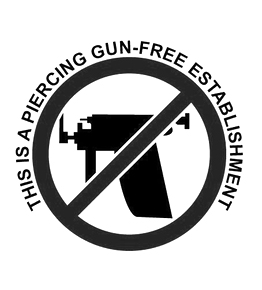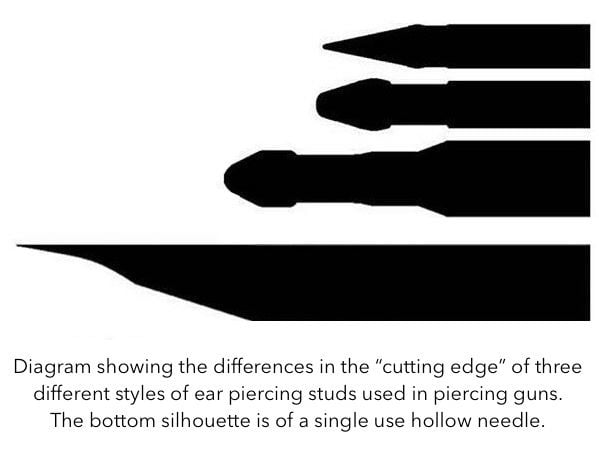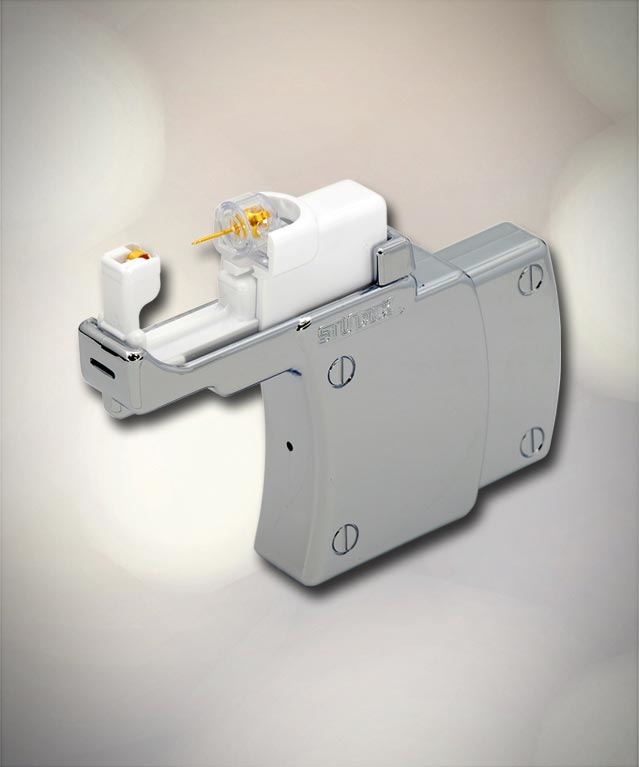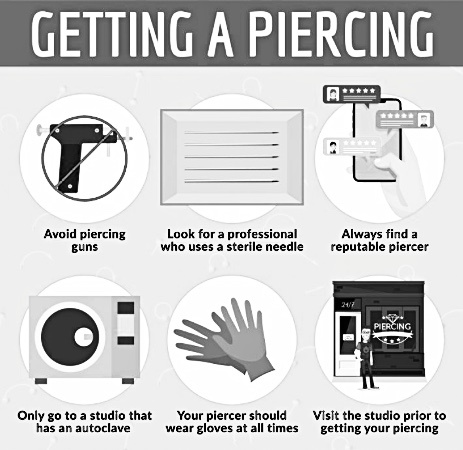Piercing Gun Info

Piercing Gun Method & History
While piercing guns seem like a quick and easy way of creating holes, they have major drawbacks in terms of sterility, placement accuracy, tissue damage, inappropriate jewelry design and low quality metals. The piercing gun design was originally created in the 1950's in an attempt to reduce the pain involved with initial piercings by creating a hole "as fast as possible". In comparison, the piercing gun is actually more painful than the hollow needle method due to the blunt force trauma of it forcing jewelry into your skin, which causes significant tissue damage and displacement. A hollow needle is extremely sharp, which is meant to go through tissue with ease. This enables it to create a clean and precise hole to insert jewelry with little to no pain.

We have come a long way with implementing medical and sterilization protocol, cross contamination training, a better understanding of how the body heals, as well as what materials work best for healing. Piercing guns do not offer the appropriate length, style or quality of jewelry for initial piercings to heal properly. This ultimately leads to extended healing times, extreme swelling, piercing bumps, constant irritation, oozing, itchiness and other complications. The quality and style of ear piercing studs are not made of materials certified by the FDA, ISO, or ASTM as safe for long term wear in the human body, which could lead to materials from underlying alloys leaching into human tissue through corrosion, scratches and surface defects, causing cytotoxicity and major allergic reactions.
 |
Some people never seem to fully heal from a piercing done with a piercing gun due to the amount of damage done to the tissue from the blunt force trauma and the low quality jewelry used. We have clients explain having a constant struggle of only being able to wear low quality piercing studs for a few hours, then have to remove their jewelry to have a break from pain and irritation they cause. Due to this constant irritation the piercing channel starts to shrink so then they have to force jewelry back in, only to have them flare up again immediately and have to remove them. This seems like an endless cycle for most of our clients that have been pierced with a piercing gun and/or has extreme metal allergies.
Sterilization Concerns
Piercing guns cannot be sterilized properly. Anyone who has been pierced by a reusable piercing gun will become vulnerable to any blood borne pathogen left behind from the previous clients. This causes a huge issue for children who may have their fragile immune system compromised due to the spread of hepatitis and staph infections from these reused piercing guns.
If we break down what the ear piercing gun is doing we can understand why the piercing isn’t healing as well as a piercing done with a sterile piercing needle. The piercing gun uses what is called a “starter” earring that is “sharp” on the end and forcefully pushed through the tissue. The problem with those starter earrings is that even though the one end is “sharper” than most traditional earrings, it still isn’t as sharp as a body piercing needle. This also makes it more difficult for healing because the sharp back end of the jewelry is not covered by anything and therefor left open to create wounds behind your ears if the jewelry puts any pressure onto the back of your ear or neck.
 |
The main reason for this article is to educate and inform you of the potential dangers of piercing guns and why it's best to seek an experienced piercing professional to pierce you or your children. A professional piercer will be able to determine what type of jewelry and length is appropriate for your anatomy and perform a sterile and comfortable piercing. A professional studio should always take the time to explain in great detail how to care for your new piercing, offer free check ups and happy to answer any questions throughout the healing process.
 |
- CLICK HERE to read the APP's position on Ear Piercing Guns
- WHY YOU SHOULD NEVER GET PIERCED WITH A PIERCING GUN
- Dangers of getting pierced with a gun
